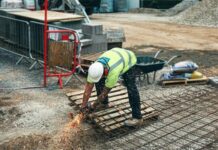World Construction Today – Construction on renewable-based capacity must be dramatically expedited if Europe is to obtain up to 40% of its energy from renewable sources by 2030 and avoid a worsening energy crisis.
Large and sophisticated renewable building projects are frequently undertaken, and they are rarely completed quickly. According to World Construction Today’s most current Global Capital Projects Outlook, the percentage of construction projects in Europe that were finished on time fell by 16% in the previous year. In actuality, the commissioning of new wind farms constructed around the EU in 2021 added only eleven gigawatts of energy capacity. Compared to the goal of adding 30 GW per year until 2030, that is a minuscule amount. The relatively slow rate of building might thwart Europe’s plans to attain net zero and boost energy security by substituting domestic renewable energy sources for imported fossil fuels.
The expansion of Europe’s energy infrastructure is being hampered by post-pandemic skill shortages, supply chain issues, and rising energy prices. The main determinant of whether infrastructure projects in Europe are completed on schedule and within budget is currently cited as unmanaged or unforeseen risks.
Software that doesn’t work together
Uncoordinated and diverse building value chains, compartmentalised project delivery models, a variety of disconnected technological systems, insufficient risk assessment, and erroneous progress measurement techniques all contribute to the issue. For instance, it’s common practise to manually track project progress using spreadsheets without prior rules of credit, which gives the project owner a partial picture of what has actually been accomplished and, more crucially, what remains to be done.
Although the iterative and participatory approaches of design-build and progressive delivery are increasingly common in construction contract processes, many owners continue to rely on the conventional, linear strategy of design, then bid, then build. To ensure work gets done faster and with fewer conflicts, and to tend to more quickly absorb changes, iterative techniques and shared risk models can be considerably more effective and open. They also aim to minimise ripple effects on other tasks in the queue. Unfortunately, the variety of proprietary tools and point solutions now in use across the sector are under a lot of pressure from the drive for closer cooperation and real-time visibility to enable these collaborative models. As a result, data silos develop between project partners, and in Europe, poor stakeholder communication is identified as the second-leading cause of project cost overruns and delays.
To enable uniform, agile, and faster project delivery, it is urgently necessary to digitalize and integrate building procedures. It may be possible to support more integrated and flexible project delivery models by moving away from point solutions and toward integrated project management solutions and interoperable construction technology. Open platforms and the integration of project management tools may make it possible to see changing delivery dates in real time, which could speed up project completion rates.
Similar to that, these platforms make it simpler to enact consistent Earned Value Management performance measures to instantly compare the current progress against proposals across entire projects in close to real-time, allowing stakeholders to quickly identify and mitigate issues rather than waiting for a report at the end of the month.
Data connections in construction
Modern, benchmark project control systems that are hosted in the cloud allow integrated project delivery techniques that enable all stakeholders to oversee and accelerate each stage of a project’s creation and execution. Data-driven approaches that make use of project data from the past to guide project planning in the future can also be made possible by integrating information across project lifecycle stages, roles, and stakeholders.
A planning method that is continuously risk-adjusted by combining artificial intelligence and human intelligence can be established, ensuring that reasonable expectations are set at the time of funding authorization and during the execution of the design and construction activities.
Companies can compare current estimates and schedules to historical, as-built results by combining past and present project data, verifying the plan, or highlighting potential risk areas. A similar strategy reduces the ramp-up time for new employees, especially those with less expertise, by allowing them to make use of the collective knowledge and lessons gathered from earlier projects.
Europe’s present construction models and systems are being fundamentally upgraded in response to the demand for quicker building across the continent. Moving away from linear, fragmented project delivery models and isolated software systems in favour of integrated, dynamic, data-driven approaches where risks are continuously evaluated and handled cooperatively by all stakeholders is fundamental to the endeavour.



































